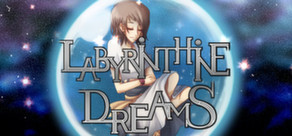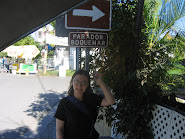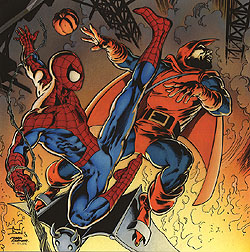 Well...I sure let this one fall by the wayside. Sorry about that. Here is the six-month old first part of this series if you are interested. Basically, as the new "Complete Clone Saga Epic" collections come out, I'm going to give the story another look and explore what it was about this plotline that ultimately pushed me away from Spidey comics. Unfortunately, it doesn't seem like there has been much improvement since. From what I know of this "Brand New Day" business, I didn't know how good I had it back in the 90s. I do wonder why Marvel has chosen to reintroduce this much-maligned story to the public now...is Ben Reilly set for some sort of return to the mythos? Time will tell.
Well...I sure let this one fall by the wayside. Sorry about that. Here is the six-month old first part of this series if you are interested. Basically, as the new "Complete Clone Saga Epic" collections come out, I'm going to give the story another look and explore what it was about this plotline that ultimately pushed me away from Spidey comics. Unfortunately, it doesn't seem like there has been much improvement since. From what I know of this "Brand New Day" business, I didn't know how good I had it back in the 90s. I do wonder why Marvel has chosen to reintroduce this much-maligned story to the public now...is Ben Reilly set for some sort of return to the mythos? Time will tell.This second collection starts out with "Back to the Edge," focusing on a still moody Peter Parker/Spider-Man as he struggles to deal with Aunt May's deteriorating health and the sudden return of his clone. Meanwhile, Mary Jane heads back to Pennsylvania to see her estranged family members. Her plotline is actually a lot stronger; Spider-Man's encounters with Puma and Nocturne feel aimless. It picks up a little towards the end as Spidey meets up with his old pal Daredevil (another character who was going through some weird crap in the 90s). They team up to fight two avian-themed villains, the Owl and the Vulture. B-B-B bird bird bird, bird was the word. Sorry.
Anyway, you might remember the Vulture as the senior citizen with a feathered suit that allowed him to fly and who could give Spider-Man a good fight despite his advanced years. At this point, however, he had just undergone a process to make him young again (way to undo the most interesting part of the character, Marvel). Anyway, Vulture infects Spider-Man with a deadly virus that has no antidote. Uh-oh.
 Now it's time to go back to Ben Reilly/Scarlet Spider for the "Web of Life" storyline. I mentioned last time that I was fond of "The Exile Returns," the first solo clone story, but this one is somewhat weaker. The most interesting part was the connection between the Scarlet Spider and Betty Brant, who was looking for an interview with the new Spider-person in town. Unfortunately, this element is jettisoned almost immediately...perhaps to give more attention to the story's major antagonist - Kaine.
Now it's time to go back to Ben Reilly/Scarlet Spider for the "Web of Life" storyline. I mentioned last time that I was fond of "The Exile Returns," the first solo clone story, but this one is somewhat weaker. The most interesting part was the connection between the Scarlet Spider and Betty Brant, who was looking for an interview with the new Spider-person in town. Unfortunately, this element is jettisoned almost immediately...perhaps to give more attention to the story's major antagonist - Kaine.If you've been following the Clone Saga through these new collections, then you already got a full explanation for the beef between Reilly and Kaine in "The Lost Years." Back when these issues were first coming out, however, this was all very mysterious indeed. You could tell Marvel wanted Kaine to be the next Venom-esque antihero, but the fandom wasn't really sold. In fact, a lot of people hated the guy. I thought he was okay in small doses. At the end of this story, Kaine fights and kills The Grim Hunter (Kraven's son who had only just been introduced recently) and Reilly basically watches the whole thing. The story also introduced his geneticist pal Seward Trainer, who would be important later on.
What of Spider-Man? He begins to succumb to his illness in "Web of Death," and receives help from a most unlikely source - Doctor Octopus. Except for the very end, this story is damn good, even awesome. J.M. Dematteis and Tom DeFalco turn in excellent writing here. As Doc Ock observes that the Vulture may have succeeded where he always failed, he realizes just how much he respects Spider-Man as an opponent. "I've always looked upon you as the last decent man," he thinks, and is clearly faced with a "Who am I without my enemy?" complex. It's pretty brilliant.
 Dr. Octopus decides that he doesn't really want to see Spidey gone for good, and puts his considerable scientific knowledge to use to develop a cure. He is successful, though not before Parker flatlines for a few minutes and has a ghostly vision of his own ascent to the afterlife (a very subtle hint about the Clone Saga's future is dropped here, it's quite sneaky). Still, Spidey recovers and gets more good news - Mary Jane is pregnant. Knowing that he is going to live and will soon be a father, he finally shakes off his depression and joyously bounces across rooftops. For fans who had waded through months of oppressive doom and gloom, this was a godsend.
Dr. Octopus decides that he doesn't really want to see Spidey gone for good, and puts his considerable scientific knowledge to use to develop a cure. He is successful, though not before Parker flatlines for a few minutes and has a ghostly vision of his own ascent to the afterlife (a very subtle hint about the Clone Saga's future is dropped here, it's quite sneaky). Still, Spidey recovers and gets more good news - Mary Jane is pregnant. Knowing that he is going to live and will soon be a father, he finally shakes off his depression and joyously bounces across rooftops. For fans who had waded through months of oppressive doom and gloom, this was a godsend. What of Doc Ock? He turned himself into the police, saying that he wanted Spider-Man to be rested and refreshed for their next battle. Spidey's bafflement as Ock marches off with the cops is priceless. Sadly, this story would have a miserable ending. Kaine shows up again, defeats Dr. Octopus easily and then snaps his neck. That's right - one of Spider-Man's all time greatest foes, a guy with a thirty-plus year record at that point, is killed off by this newcomer. It sucked hard. Marvel ultimately realized their mistake and years later, Ock was resurrected by mystical ninjas (I am NOT making that up).
The collection also features the "Funeral for an Octopus" mini-series, which I could never convince my parents to get me since I was spending so much money on other comics during this Clone business. Ock's death brings a bunch of his supervillain buddies together and they cause trouble. That's about it. It's pretty lighthearted and fun, actually. After that is a standalone story where both Spideys deal with terrorists who have taken over the World Trade Center. Yeah, that's right. This was kind of dull in the 90s. Now...it's unnerving.
 The final story in this second collection is "Smoke and Mirrors," which features the return of The Jackal, the mastermind of the original 1970s Clone Saga and Ben's creator. Given that clones were in again, it made sense for him to come back. The change in his characterization is notable. In his original incarnation, the Jackal was just a mean, nasty adversary. Now he is king of puns and cringe-inducing pop culture references. You could tell for a long time that Spidey's creators wanted a villain who was similar to The Joker. They tried with Carnage...who certainly had the requisite insanity, but he was something of a simpleton without Joker's mad genius. The Jackal has the genius, but is a bit too over the top in his ambitions to get the same appeal. Joker didn't really want to take over the world, he just wanted to do crazy stuff. He was brilliant at that, though. Can't blame Marvel for trying, but you can't top The Joker. Won't happen.
The final story in this second collection is "Smoke and Mirrors," which features the return of The Jackal, the mastermind of the original 1970s Clone Saga and Ben's creator. Given that clones were in again, it made sense for him to come back. The change in his characterization is notable. In his original incarnation, the Jackal was just a mean, nasty adversary. Now he is king of puns and cringe-inducing pop culture references. You could tell for a long time that Spidey's creators wanted a villain who was similar to The Joker. They tried with Carnage...who certainly had the requisite insanity, but he was something of a simpleton without Joker's mad genius. The Jackal has the genius, but is a bit too over the top in his ambitions to get the same appeal. Joker didn't really want to take over the world, he just wanted to do crazy stuff. He was brilliant at that, though. Can't blame Marvel for trying, but you can't top The Joker. Won't happen."Smoke and Mirrors" isn't really a good note for this collection to go out on. It's very contrived and a little tedious, and it first introduces the suggestion that maybe Ben is the real one and Peter is the clone. You can understand the writers wanting to add some mystery...but I remember reading that as a kid and being like "Really? They're going to do this?" It's one of those plotlines that feels natural but at the same time...I don't know if anyone really wanted it. That's it for now - there will be plenty more unwanted revelations ahead, that's for sure.



